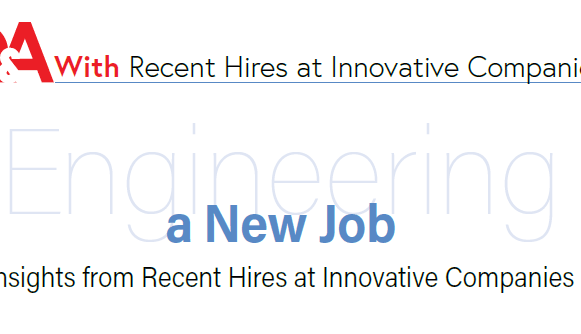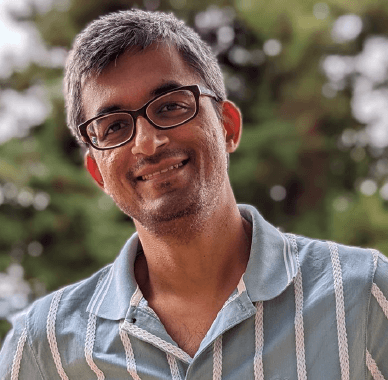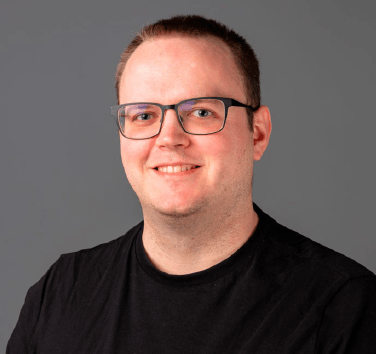Engineering a New Job: Insights from Recent Hires at Innovative Companies
on

Finding an engineering job at a top company can be a challenge at any time during an engineer’s career. But when you add a global pandemic and macroeconomic instability to the mix, the process of securing a new position can seem like a daunting endeavor. Fortunately, a few recent hires at some of the electronics industry’s most exciting companies — Microchip Technology, Raspberry Pi, SIMAC, and krtkl — agreed to share insights about their journeys.
Microchip Technology: Pranay Prabhat
Pranay Prabhat is a recently hired staff engineer at Microchip Technology, which employs more than 21,000 people around the world. Even though he originally interviewed for a wireless systems job, Pranay ended up landing a position in a microcontroller chip design team.

C. J.: When did you join Microchip? What is your current job title?
Pranay: July 2022. Senior Technical Staff Engineer – Design.
C.J. Can you briefly describe your job responsibilities?
Pranay: Still learning them! Primarily, to act as SoC lead for 32-bit microcontroller chip design projects. Microchip are building a new design team in Ely (UK), near my home in Cambridge, and I was fortunate enough to be the first person to accept an offer in this team and be part of this exciting initiative.
C. J.: How did you learn about the position? What attracted you to it?
Pranay: I was referred to the position by an external recruiter. I was initially a little unsure about the position that I applied for because it was a deeply technical position requiring wireless expertise, which wasn’t really in my background. But both the recruiter and Microchip HR were very encouraging, and explained that Microchip had many opportunities in the works, not necessarily just the ones currently advertised. And so it transpired that whilst I initially interviewed for a wireless systems position, I ended up securing a role in a microcontroller chip design team.
C. J.: You secured a position at a top company during a global pandemic. Very impressive! Did the COVID-19 situation make the job-seeking process easier or harder for you? Why?
Pranay: I think the main change was the complete absence of any face-to-face interaction. This was weird. In some ways it was easier. Sometimes it’s hard to give your best in an interview immediately after a long journey. So being able to do everything from the home office made that easier. But it also brings its own stresses, being subject to the whims of home Internet and personal laptops. Despite all preparations, some IT issues are inevitable, and they always happen at the worst possible time!
C. J.: Please share some details about the application and interviewing process.
Pranay: It was a series of video calls with various people at Microchip. Between the calls, I was always kept well informed about the status of my application, the next steps and what was going on. I really appreciated this as it was certainly not the norm among all the companies I interviewed with!
C. J.: Describe the sort of technical questions you were asked during the interview process.
Pranay: The technical interview was a really memorable experience. The very first panel (of four) had more than a hundred years of combined experience working for Microchip! The questions ranged from familiar topics like digital design, place-and-route, synthesis, to topics well outside my comfort zone like wireless communication, noise, RF, and analog design.
C.J.: You work for a well-known company in the industry. What’s that like?
Pranay: For me, it’s a bit of a mixed bag. For semiconductor industry friends and colleagues, there is an immediate nod of recognition as people in the industry know very clearly who Microchip are and what we stand for. But in our local area around Cambridge (UK), our presence at the moment is relatively small so people outside the industry are often surprised when they learn about the scale and breadth of Microchip’s operations.
C. J.: Tell us about your first week. Did you dive straight into engineering?
Pranay: Not quite! One thing I really appreciated was the immense effort put in by colleagues on other sites to help me and other new recruits ramp up. Within a couple of months of accepting the offer, I’ve had visits from senior colleagues and management from France and the HQ in Arizona, really taking the time to explain the details of how our business unit works.
C. J.: Can you share some tips or advice for other engineers who would like to apply for similar jobs in the field?
Pranay: Be thick skinned about any interview process! And open minded! Job hunting can be a rollercoaster, with sure-shot prospects sometimes falling through for no apparent reason, and long shots sometimes coming good. Candidates can never have a full view of the decision-making process behind each individual hiring story, so if things don’t work out, don’t assume it’s something you said or did – just carry on looking for something that fits your aspirations.
Raspberry Pi: Robert Thomas
Robert Thomas joined Raspberry Pi during the pandemic. He first learned about the available position on LinkedIn. The interview process involved a few meetings, discussions about his past work, and about two hours of coding.

C. J.: When did you join the team at Raspberry Pi? What is your role there?
Robert: I joined in September 2021. My role predominantly encompasses work on the design, development, and maintenance of automated test systems.
C. J.: How did you learn about the position with Raspberry Pi? What drew you to the position?
Robert: I initially found out about the position via a listing for a “DevOps Engineer” on LinkedIn. I had worked with Raspberry Pis during the final year of my bachelor’s and master’s, and so was eager to work for the company. In a more literal sense, the Easy Apply option on the listing was part of the attraction in applying. My CV, work experience, and cover letter did not match perfectly with the listed requirements, so I would have been a bit more reticent about a more verbose application.
C. J.: Tell us about your daily responsibilities. Walk us through an average day.
Robert: My major responsibility since starting here has been the design and development of an automated test system, plus the tools to visualise our historical test data. My days tend to start with checking on the current status of our system and examining any deviations that have been picked up. Following that, I’ll check in on my development systems to see if my latest code has worked as expected overnight before starting work crossing off the next feature for the system.
C. J.: Finding a new job during a global pandemic has been a challenge for many people. What was your experience
Robert: Just before the pandemic started, I had made the decision to start looking for the next step in my professional development. With the advent of the pandemic, this got put on a slight hiatus due to the rapid drying up of available roles. This, coupled with a period of furlough, gave me the time to focus on brushing up on previous skills that I had let atrophy and rework my CV to be targeted at the jobs that I wanted to do going forward. Come the spring of 2021 I started sending out applications to a multitude of different roles, but it felt like there were less interview opportunities where I could demonstrate my practical skills. Most importantly, I made sure to try and just keep a regular pattern of looking for available roles, checking every couple of days and sending off applications only to those that were interesting, which normalised the process and reduced the negative feelings that can accrue with rejections.
C. J.: Describe the application and interviewing process with Raspberry Pi. What was it like? How long did it take
Robert: As mentioned previously, I applied to Raspberry Pi using the Easy Apply option on the job posting. This just involved sending through my CV instead of having to compose a cover letter to accompany it. After a short period an interview was organised within the fortnight, which was conducted in person and involved me talking through my master’s project and some of the professional and personal coding projects I had done since. The whole thing took around an hour and a half in total.
C. J.: Were you given any technical questions during the interviews? How did you prepare before the interviews?
Robert: Due to my CV not matching up perfectly with the job listing, a second meeting was organised after the first interview had completed. This was around two hours of coding to achieve some rough objectives that had been drawn up from what I discussed in the previous interview. A couple of days prior to the meeting, I was given the advice to have a look into Python bindings and Debian packaging as I had not had any experience with either. The challenge itself was to then try and package up a personal project from my GitHub, with a developer available next door in case I had any technical questions, but for the majority of the time I was working on my own. After the two hours had elapsed, we went over what I had achieved, what I had left to do and my thinking throughout. The scope of the challenge was such that it was not expected to be completed within the time period, but was mainly to assess how I worked as an engineer, and with other team members.
C. J.: Raspberry Pi is among the most exciting companies to work for in the electronics industry. How does it feel to be part of such a well-respected team?
Robert: Since starting just over a year ago, I have only positive things to say about my experiences. It is great to have been given the agency and responsibility for my own projects while still working within such a talented team. People are always interested to hear more when I say that I work at Raspberry Pi, although it turns out that not everyone is as passionate about testing and automation as I am!
C. J.: What was your first week like? Did you begin engineering right away?
Robert: Yes, when I started, I was immediately working with software and engineering. Fortunately, I joined at the start of a new project, so it wasn’t as hard a landing as joining one mid-way would be. I was performing lots of research and planning, which was fortuitous in that it let me familiarise myself with the different facets of the company that I would be interacting with. Everyone at Raspberry Pi is, and was, super helpful, which made my first week an enjoyable experience.
C. J.: Do you have any advice for other engineers who might be job hunting at this time?
Robert: Get your CV and cover letter templates up to date, make sure that you know where in both you will personalise them, and make sure you brush up on everything you have put on it. I had a “highlighted project” section on the front page that I would tailor to the role I was applying for, and a typed up list of projects that I could drop in depending on the job. Spending this effort early reduces the mental energy required for applications ensuring you don’t miss the perfect job. Once you have that done, start applying to anything that piques your interest. I didn’t match up perfectly with the role I ended up with, but my passion and interest showed I was more than willing to learn and grow on the job.
SIMAC: Jens Schwalenberg
Jens Schwalenberg transitioned at SIMAC Electronics from a student assistant position to a role in product development. Since Jens regularly works on a variety of projects and tasks (e.g., product development, package design, and project planning), he never has to worry about getting bored.

C.J.: When did you join SIMAC? What is your current role with the company? What are your responsibilities?
Jens: I joined SIMAC in May. I am currently working in product development, and I am also the head of media and design development. My area of responsibility is mainly media and software development. My developments flow into our product development. But also other developments like the development and maintenance of our websites, product photography, design of packaging and other graphic elements fall into my area of responsibility. In addition to these areas of responsibility, other tasks can also fall within my scope, such as leading workshops and planning projects.
C.J.: How did you learn about the position at SIMAC? Why did you apply?
Jens: Before I started my current position at SIMAC, I was already employed as a student assistant at SIMAC. Here I started with the development and control of manuals and datasheets for our products. Over time and through the knowledge I acquired during my studies, I was able to grow into my current responsibilities. Originally, however, I became aware of the company through a job advertisement on the job portal of our employment agency. Since the position advertised there fell exactly into my area of interest, I had decided to apply to this company.
C.J.: You joined the company during a global pandemic. Did the COVID-19 situation make things easier or harder to find the job? Why?
Jens: Since I was of course not completely unknown to the company through my work as a student assistant and had also been able to prove myself before, I had a certain advantage here, of course, which definitely made it easier for me to get hired during the pandemic. But in general, I would say that the global pandemic has made finding jobs much more difficult. Not finding in general, skilled workers in technical fields are still wanted everywhere. But the application processes are now much more complicated. Personal contacts and appointments are limited to the bare minimum and application processes are now held in digital form in many companies. In this way, however, a direct insight into a company is hardly possible. So before starting the job, you can now no longer be sure whether you have really made the right decision. Of course, this applies to both the applicant and the company itself.
C.J.: What steps did you take to apply and to interview? Was the interview process challenging?
Jens: Because the position as a student assistant was advertised on the job portal of the employment agency, I applied directly to SIMAC. I was already accepted during the interview. I definitely have to give SIMAC credit for the fact that a simple interview was enough and that no multiple application rounds or assessment center tests were necessary.
C.J.: Were you asked technical questions during the interview process? How did you handle answering those?
Jens: During my interview, it was less about detailed technical questions, but much more about what kind of projects I have already implemented within my studies and in which technical areas my interests lie. As long as a certain level of problem-solving ability is present, and this can be combined with a personal interest in the technical area, then the most important basic requirement is already given. It was exactly these skills that I was also tested on in my job interview.
C.J.: What is the most rewarding aspect of your job?
Jens: What I like most about my job is the versatility. I work on both technical developments and design developments. None of our employees are exclusively responsible for a single area. This makes the work particularly varied, so it can never get boring. In addition, there is the aspect that hierarchical structures are very limited in our company. In this way, we all deal with each other in a very familiar and friendly manner. Therefore, we do not have a dominating attitude, which of course leaves more room for free ideas and creativity.
C.J.: Tell us about your first week. What was it like?
Jens: My first week was, of course, like most first weeks, a very unknown situation. You try to get to know and understand all the workflows and processes as quickly as possible and adapt to all the circumstances. However, I was warmly welcomed by all employees and never put under pressure. I was able to ask questions of any kind, whether about work processes or technical details, at any time, so that my orientation phase was made as easy as possible.
C.J.: Do you have any advice for other engineers who would like to apply for similar jobs in the field?
Jens: My advice for other developers who want to apply for similar jobs is not to focus and specialize too much on a single application area. I really value the versatility in my job that comes from learning different skills (for example, software development, web development, and design skills). This is especially valuable for small to medium-sized companies, as many different requirements can be covered with the same employee. This versatility not only allows you to work in many different fields, but also prevents you from working exclusively on the same tasks over and over again. The joy of my job is characterized by a mixture of personal interest and a healthy amount of variety.
krtkl: Blake Rayburn
Blake Rayburn joined krtkl as an FPGA engineer in August 2022. As a remote worker, he is responsible for the FPGA portion of a communications-focused design for space applications.

C. J.: When did you join krtkl? What do you do there?
Blake: I joined krtkl in August of this year as an FPGA (Field Programmable Gate Array) engineer.
C. J.: What sparked your interest about krtkl and the job? How did you learn about it?
Blake: I found this position through an online job posting from a recruiter. The initial job posting was brief, but it got my attention due to solid overlap in the job responsibilities and my experience. Once I learned more about krtkl, I was excited for the opportunity to work on cutting-edge projects in a small team environment.
C. J.: Tell us about your job responsibilities. Do you work remotely?
Blake: I am responsible for completing the FPGA portion of a communications-focused design for space applications. This involves working with vendor toolchains for digital logic system design, creating Hardware Description Language (HDL) blocks, validation, and verification. I am also responsible for documenting my work and making it accessible for collaboration with other engineers. Along with other employees at krtkl, I work completely remote.
C. J.: You found this job during the global pandemic. Did the COVID-19 situation make the job-seeking process easy or hard?
Blake: I think overall COVID made finding a job easier than in the past. With many companies adopting remote work, there are more opportunities for jobs that would have previously required relocation. I also felt that more companies have a presence on online job boards and in general are more open to a fully remote interview process.
C. J.: What was the application and interviewing process like?
Blake: I applied through a recruiter and had a quick phone screen with them followed by a phone screen with krtkl to learn more details about the company and the position. I then had a longer technical interview with krtkl that was focused on my skills and past experiences. The final step was a quick take-home coding assignment.
C. J.: Were technical topics or engineering questions covered during the interview process? What sort of engineering challenges did you discuss?
Blake: I had one technical interview focused on engineering questions and challenges. There were some initial questions to gauge my experience that got progressively more detailed and specific. I was asked to explain a project I had completed in detail along with a description of specific problems I encountered and how I solved them. There were also some broader problem-solving questions about hypothetical problems that were more focused on my general thought processes.
C. J.: Describe an “average workday.”
Blake: I like to start my day by reviewing my notes from the previous day to get a refresher of where I left off and what my goals are for the day. My day is primarily spent coding HDL and running simulations to verify it. This also involves keeping the documentation for the project and its code up to date. Some days I have meetings with my boss to give project updates and get help with anything I’m stuck on.
C. J.: Tell us about your first week at krtkl.
Blake: My first week at krtkl was a little abnormal as my boss was out of town on vacation. I had a meeting at the start of the week to go over what project I would be responsible for and was provided with some documentation to get me started. Because the project itself was just getting started, I spent the whole week doing research into how we would achieve the project requirements and what the first steps to get started on it were.
C. J.: Do you have any advice for someone looking for a similar position?
Blake: With everything being very online focused now, I think the best approach to take for applications is quality from quantity. It’s very hard to judge a company from a job posting, so I think it pays to not be too picky when it comes to sending out applications. I also think it’s more important than ever to stand out, but to do so in a concise and direct way.



Discussion (0 comments)